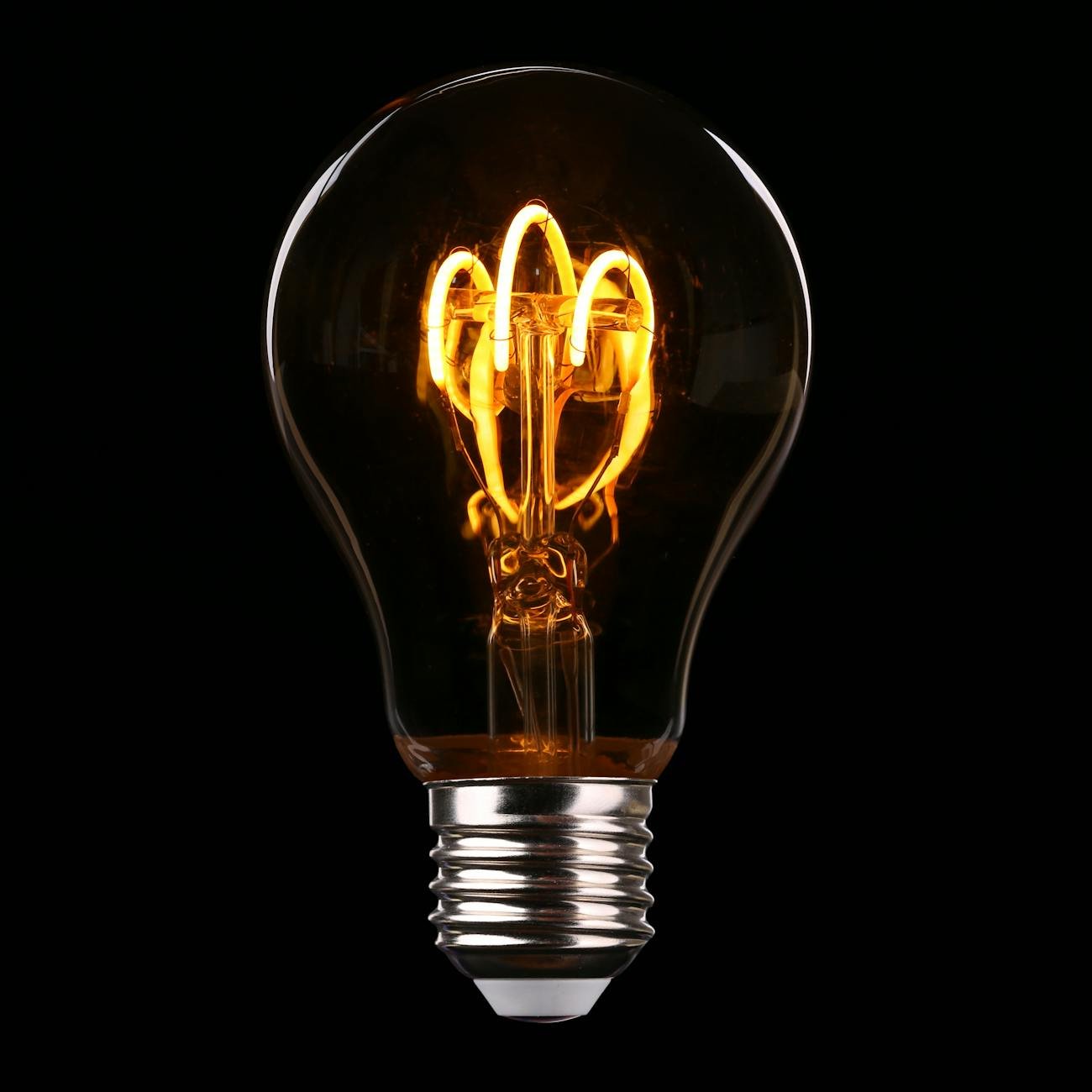Reactive Power, Active Power, & Apparent Power Explained
Ever heard of ‘reactive power’?
It’s not a new Marvel superhero movie, rather a vital term in the often-intimidating field of electrical engineering.
Seems complex? Don’t worry, we will break it with a glass of beer (metaphorically).
Complex as it sounds, reactive power underpins all our daily gadgets. Yes, from your morning coffee machine to your computer; all silently perform based on this concept.
So, are you ready to unravel the mystery called ‘reactive power’?
Great!
Let’s jump right in.
Table of Contents

Understanding Reactive Power in Simple Terms
In simple terms, reactive power is the power associated with energy fluctuation in an AC (alternating current) circuit which doesn’t do any actual work, but helps in the functioning of electrical systems.
It only moves back and forth and is crucial for maintaining voltage levels necessary for the system operations.
Key Components of Reactive Power
Despite its seemingly complicated nature, it can be understood easily when we break it down into core components:
- Alternating Current (AC): This is a form of electric current in which its direction changes in a regular manner.
- Real Power: This refers to usable power that performs actual work of lighting, heating, movement, etc.
- Apparent Power: It is the resultant of real power and reactive power. It represents the total power in an AC circuit.
Why is Reactive Power Important?
Why should you care about something like reactive power, especially when it isn’t performing any actual work?
The answer is simple. Without reactive power, many of our modern technological systems wouldn’t function properly.
For instance, in electrical power systems, reactive power is required to sustain the electromagnetic field in equipment like transformers, motors and power transmission lines.
Reactive Power in Everyday Life
While it might seem that reactive power is relegated to the realms of abstract theory, it’s not. It plays a significant part in everyday life. Let me show you how:
- Electric utilities utilize reactive power to control voltage levels on their transmission lines.
- In industrial facilities, reactive power is a major component that affects power factor, a key determinant of electricity bill.
- Home appliances like refrigerators, air conditioners and induction cooktops all operate with the help of reactive power.
A Simple Analogy to Understand Reactive Power
Still having trouble comprehending reactive power?
Let’s picture it this way. Imagine your power system as a beer mug. The actual beer signifies real power doing useful work. The foamy head, on the other hand, represents reactive power.
It doesn’t quench your thirst but is necessary for the perfect mug of beer.
The total size of the mug? That’s your apparent power.
So, put in these terms, isn’t reactive power far simpler to understand than it initially seemed? Understanding construction and engineering doesn’t have to feel like a rough mountain climb.
It can simply be a friendly chat over a (metaphorical) beer.

Active Power: The ‘Beer’ in the Mug
So, now that we have a fairly good grasp on reactive power, let’s focus on the main star of our metaphorical beer mug – the beer itself, or “active power”.
What role does it play in the electrical spectrum and why is it different from reactive power?
Active Power: The ‘Working’ Power
Active power, often simply termed as “power”, is the real deal in the electrical world.
Unlike reactive power which is more of an enabler, active power performs the actual work. When you switch on a light or an electric motor, the energy that lights up the bulb or rotates the motor is active power.
It is responsible for the main ‘action’ and can be measured in watts (W) or kilowatts (kW).
Active Power and Its Components
To comprehend the essence of active power, let’s dissect it into its main components:
- Direct Current (DC): Unlike AC in reactive power, DC is a type of electric current which flows in one direction.
- Energy Consumption: Active power is directly responsible for the energy consumption in a system. The rise and fall in your electricity bill? Active power is the culprit.
- Power Factor: Active power forms the part of the power factor which is directly linked to the efficient operation of an electrical system.
Role of Active Power
So, why is active power important? Would getting rid of reactive power make things better and our systems more efficient? The answer is both yes and no.
Active power is undoubtedly the hero of our power story – driving all our devices, lighting up our spaces, and setting our manufacturing units in motion. However, without reactive power, it cannot function to its full potential.
This dependency is what creates the difference between active power and reactive power.
Active Power in Daily Life
Active power’s influences extend into various aspects of our everyday life. Here are a few instances:
- The functioning of devices like laptop chargers or DVD players is dependent on active power.
- Your electricity meter at home records the active power consumption, which forms the basis of your utility bill.
- In a power-intensive industry, managing active power is directly linked to reducing energy costs.
Active Power and Reactive Power: Separate but Interdependent
Let’s return to our beer metaphor.
Imagine having a mug with only beer and no foam, or worse, having a mug filled with pure foam. Neither scenario delivers the truly enjoyable experience of a well-served beer, right?
Similarly, in an electrical system, a balance of active power and reactive power is necessary for a smooth and efficient operation.
With the right approach, it is as easy as enjoying a well-deserved pint after a long day.
Tackling The Mystery: Why is Reactive Power High?
Now that we’ve grappled with fundamental power terms, it’s time to explore one of the most frequently asked questions about reactive power: Why is it high?
What factors contribute to its rise and how does this affect our electrical systems?
Reasons Behind High Reactive Power
The question of why reactive power is high is often met with perplexed faces. Let’s unravel this mystery:
Design of Electrical Equipment
Did you know, the design and operating characteristics of electrical equipment like motors, transformers and inductors can significantly influence the level of reactive power? Indeed, these equipment types inherently require a high level of reactive power to maintain their magnetic fields.
Usage of Non-Linear Loads
Non-linear loads, such as electronic gadgets like computers or fluorescent lights, produce harmonic currents. These currents increase the level of reactive power in the system.
Highly Inductive Loads
In certain industries employing processes that involve high-rotating machinery, the inductive impedance is considerably high, leading to increased reactive power.
Improper Power Factor
Finally, an improper power factor – remember, the one impacted by reactive power – can result in high reactive power. Power factor correction, in such cases, would be necessary to reduce your electricity bill.
Impact of High Reactive Power
Why should we bother about high levels of reactive power on the grid? Well, the repercussions are manifold:
Increased Transmission Losses
High reactive power results in larger currents, causing an increase in transmission losses. This can affect the efficiency of the power system as a whole.
Low System Efficiency
Reactive power consumes a part of the overall transmission capacity, leaving less space for active power – the power doing real work. Consequently, system efficiency decreases.
Increased Electricity Costs
Parallel to the decrease in system efficiency, electricity costs go up. High reactive power can lead to charges for exceeding the demand of reactive power agreed with the power provider.
Reducing Reactive Power: Crucial for Efficiency
High reactive power level, while necessary for certain functions, can hinder the overall efficiency of an electrical system. In this light, finding methods to reduce reactive power becomes a quest of paramount importance.

Apparent Power: The Total Capacity of the Beer Mug
Now that we’ve tackled reactive and active power, it’s time to address the last piece of the puzzle – “apparent power”.
As we’ve previously likened to the total capacity of our metaphorical beer mug, it’s a crucial element of our electrical understanding.
But what exactly is apparent power, and how does it differentiate from active and reactive power?
Defining Apparent Power: The Sum of Powers
Apparent power, symbolized as ‘S’ in electrics, is essentially the total power contained within an AC circuit, including both active and reactive power.
It is called ‘apparent’ because it’s what we apparently observe as the total capacity of a power system. But it doesn’t directly correlate with actual work or energy transfer.
It is measured in a special unit called Volt-Amperes (VA) and not in Watts.
Elements of Apparent Power
Let’s dissect apparent power into its primary constituents:
- Complex Power: Apparent power forms part of the concept of complex power in an AC circuit, which combines real, reactive, and apparent power.
- Vector Sum: Apparent power is effectively a vector sum of active power (P) and reactive power (Q), calculated using the formula: S = √(P^2 + Q^2).
- Power Triangle: Remember the beer mug metaphor? The base of the mug filled with beer depicts active power, the frothy shown as reactive power and the hypotenuse of this power triangle represents apparent power.
Importance of Apparent Power
Why bother understanding apparent power if it doesn’t do any actual work? Well, it’s this ‘non-working’ power that is critical to maintaining the balance of an electrical system, and here’s why.
Apparent power is the total power capacity of a circuit. It’s the available reservoir of power from which both active and reactive power is drawn.
High apparent power doesn’t mean more electricity costs, but it indicates a higher capacity for power flow, which could be both active (working) and reactive (non-working) power.
Apparent power is a crucial parameter when designing and sizing electrical systems as it considers both working power and the power required for system functionality.
Apparent Power: A Hidden Enabler in Daily Life
From maintaining voltage levels in our home circuits to sizing power transformers in utility companies, apparent power plays its role diligently. Here are some everyday examples:
- Apparent power helps maintain the balance between supply and demand in power grid systems.
- Electrical appliances like washing machines and hair dryers have their power consumption rated in Volt-Amperes or kVA, indicating apparent power.
- Utility companies size their transformers considering the apparent power, which allows them to accommodate varying loads during peak and off-peak hours.
Deciphering the Distinctions: Apparent Power vs. Reactive Power
So, we come back to our initial question – how does reactive power differ from apparent power?
As we now know, reactive power is a sort of ‘auxiliary’ power, enabling the necessary functioning of AC systems – without doing any real work itself. It sustains magnetic fields in transformers and motors, and it oscillates back and forth without moving or creating energy.
On the other hand, apparent power contains both – the active power that does the work, and the reactive power that doesn’t perform work but enables the system functions.
So, ultimately, apparent power is what you see to be present, combining the visible (active power) and the hidden yet necessary (reactive power).
Apparent Power, Reactive Power, and Active Power: The Power Trio
Wrapping our heads around these power terminologies can feel like juggling balls, but remember our metaphorical beer mug.
- The golden beer is active power doing real work.
- The froth on top is the reactive power not doing work, yet essential.
- The total volume of the beer mug, with both beer and froth, is our apparent power.
Each component is vital to enjoying a good glass of beer, just as each type of power is vital in the operation of electrical systems.
So, while each power type has its role, apparent power sums it all up, forming an indispensable part of our electrical understanding.
Isn’t that electrifying?

Last Call For Our Beer Metaphor
The concepts of reactive power, real power and apparent power might have seemed like rocky territory, but with a simple breakdown and an everyday analogy, the journey seems far less rocky.
Remember, reactivate power aids the functionality of our electric systems, and while it doesn’t perform the actual work, its importance in maintaining voltages and enabling the system operations cannot be overlooked.
From electric utilities to home appliances, reactive power indeed plays a vital role in our everyday life.
Think of reactive power as the perfectly foamed head of a beer mug, not quenching your thirst, but indeed necessary for the overall experience.
So, the next time you try your hand at understanding complex engineering concepts, just remember our beer analogy and power through without hesitation.






